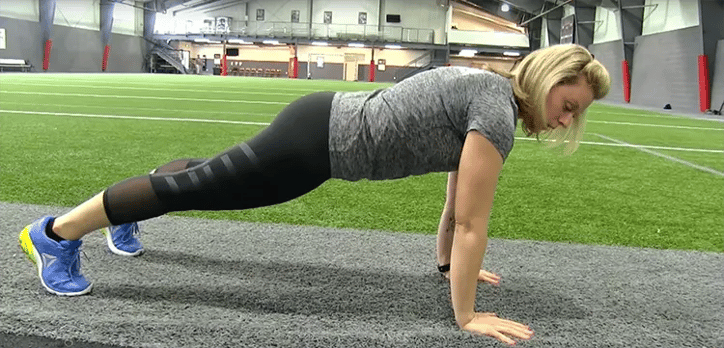Functional Exercise & Benefits of Bodyweight Training | The Arena Club
Posted by Shaunna Rivera on July 22, 2019
Functional strength training, as well as bodyweight training is a proven way to slow down the effects of age-related muscle atrophy and decrease your risk for injury. Most people exercise to maintain or improve their quality of life, and this is where functional fitness comes into play.
Despite the fact that the American College of Sports Medicine recommends that strength training become an integral part of every adult’s fitness program, most people still don’t take advantage of all that strength-building exercises have to offer. When an adult reaches the age of thirty, muscle mass and strength will begin to decrease by 3-8% each decade thereafter (National Center for Biotechnology Information). Only 30.2% of adults actually participate consistently in muscle strengthening activities at least twice a week, as recommended by the Physical Activities Guidelines for Americans (American Journal of Preventative Medicine). Tasks such as carrying groceries, playing with your kiddos, gardening, cleaning your house, going up and down stairs, or mowing the lawn are all examples of activities that adults perform as a part of their daily lives. Functional exercise exists in order to help train and develop muscular strength so that those activities become easier and safer. Functional exercise utilizes predominantly weight-bearing movements that simulate everyday activities while also targeting core strength and helping to create muscle memory. Most people exercise to maintain or improve their quality of life, and this is where functional fitness comes into play.
Contrary to its most recent trend, functional exercise is actually not a new thing. It has been around for quite some time and was developed by physical therapists to help rehabilitate patients after injury or disability. The goal was to utilize functional exercise as an aid in a patient’s recovery in order for them to regain function and return to daily activity, and is still practiced today by medical professionals. Functional exercise increases our overall flexibility and coordination, therefore improving our range of motion, allowing our daily activities to become more manageable and easier to perform. We can utilize functional exercise as a way to train our bodies to perform specific exercises that will prepare our bodies to move more safely. Some additional benefits of incorporating functional exercise into our daily routines include a reduction in injury occurrences and improved quality of life. This is especially beneficial for older adults to improve balance, agility and muscle strength, in addition to reducing the risk of falls. Comprehensive physical movements and utilizing multiple joints and muscle groups will lead to improved stability and control in maintaining strength for daily tasks.
Each life stage requires differences in daily living, therefore leading to necessary changes in a functional training routine. We will focus on general functional training, however, certain movements would become more specific to certain populations including older adults, teenagers, children, or persons with disabilities. Incorporating functional training into an existing training regimen for the average adult can be very beneficial and easy to do. Focus on using eccentric, concentric and isometric contractions specifically to target the type of movement you want to train, while also incorporating speed, range of motion, and level of coordination. Upper and lower body movements as well as core stability should be the main focus, as well as varying combinations of resistance and flexibility training that will help build function into your daily living tasks. Rather than isolating muscle groups, train for the entire movement, establishing a coordinated effort between your nervous, cardiovascular, respiratory, and musculoskeletal systems. For example, when training to ride a bike, you wouldn’t just train your quads. You would need to also focus on other muscle groups that would be recruited to assist in the movement as well.
Functional exercises can be done using equipment such as kettlebells, TRX straps, boxes or a pull up bar, but can also be performed at home without any equipment at all! Despite many misconceptions, building functional strength doesn’t require lifting heavy weights. For some, that may even be the reason why they are afraid to begin an exercise program at all. This is where bodyweight training becomes especially useful and beneficial. Bodyweight training aids in our ability to easily and conveniently train functionally. Because no equipment is necessary, the transitions are quicker between exercises and therefore the workout can be made shorter to save time. Another benefit is improved strength and muscle development. Using bodyweight exercises means that you can incorporate both cardio and strength into a workout to keep the heart rate higher, thus also positively impacting one’s metabolism. Bodyweight exercises are great for any fitness level, as they can be tailored to individual needs. Another great benefit is improved core strength, as bodyweight exercises require core engagement leading to a stronger core, better posture and enhanced athletic performance. Bodyweight exercises improve our overall health, especially our mental health. According to the U.S. Centers for Disease Control and Prevention, regular strength-building activities such as body-weight exercises can help improve your mood and may even reduce your risk of conditions such as depression. The CDC reports that weight-bearing exercise can help reduce your risk of a wide variety of many health conditions and recommends bodyweight exercises be incorporated at least two times per week. As you improve muscular strength, you will find that your daily activities become easier to maintain as you age.
(continued below) 
A few examples of bodyweight exercises, with and without equipment are listed below:
- TRX inverted rows
- Planks
- Squats
- Lunges
- Push ups
- Hamstring curl on stability ball
- Stability ball plank roll out
- Resistance band lateral raise
- Lateral walks using a resistance band around ankles
Functional strength training, as well as bodyweight training is a proven way to slow down the effects of age-related muscle atrophy and decrease your risk for injury. Try doing several of the exercises noted above to work the important stabilizer muscles in your core/deep abdominals, shoulders, and hips. You should begin to see improvements in your ability to perform everyday activities just by adding 2-3 days of functional strength training into your exercise routine. An added bonus would also be fat loss, and improved strength and endurance. Focusing on these small, consistent changes will prove to be so valuable in the long run. Exercise means different things to different people, depending on their individual fitness goals. However, daily tasks are a part of everyone’s lifestyle, meaning that functional fitness is an area where everyone can learn, grow and benefit!

Shaunna Rivera
Shaunna holds a Bachelor’s degree in Health Sciences and a Master’s degree in Education. Shaunna’s certifications include Les Mills BODYATTACK, BODYPUMP, BODYCOMBAT & GRIT; ACE Group Fitness; NSPA Personal Training.
Contact Alicia Palmere | Meet Our Trainers
Categories
- Membership
- Training
- Group Exercise
- Nutrition and Weight Loss
- Athletics & Sports Performance
- Aquatics
- Kids & Family
- Wellness
